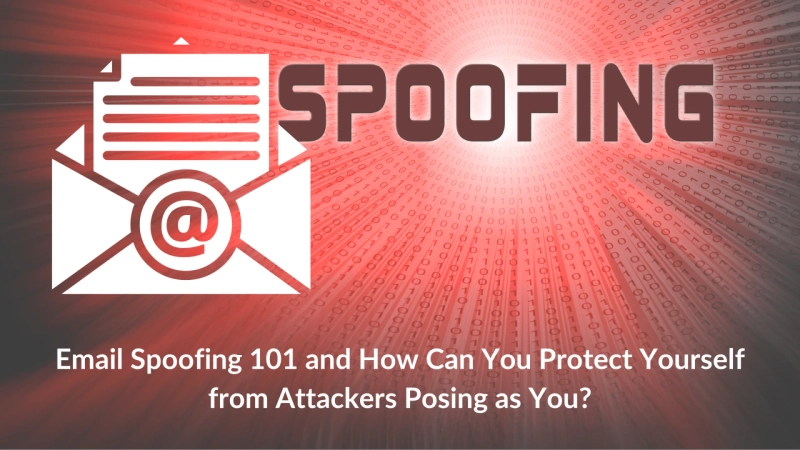We’ve all heard stories of multi-million dollar impersonation scams and of companies losing huge chunks of their data. But have you ever wondered how this happens? What are the nitty-gritty details of such scams and how are they carried out? If you have and never received answers to them, don’t worry! We’ll walk you through all the details related to email scams and, moreover, how to protect yourself from them.
EMAIL SPOOFING
When a fraudster forges an email header's 'From' address to make it look as though it was sent by someone else, generally a known contact such as a high-level executive or a trusted outside vendor, the cyber attack is called email spoofing.
In phishing and spam assaults, this type of identity deception is commonly employed to increase the open rate and effectiveness of harmful emails. Embedded links in many email assaults lead to phishing sites that steal personal information or login credentials from recipients. Others include malware-infected files or use social engineering to defraud well-researched targets via spear phishing or business email compromise (BEC) schemes.
Fraudsters impersonating an employee in emails sent to payroll, asking for a change in direct deposit information before the following pay period, or acting as a senior executive requesting W2 information on workers are two common instances. Spoofing attempts increasingly include hackers posing as reputable third-party vendors.
Email spoofing leads to financial losses amounting to billions and harms the brand’s reputation among its clientele. Customers, too, may be hesitant to purchase or subscribe to your business if they start receiving emails that seem to originate from your organization but contain harmful links or lack credibility. If customers fall for fraud imitating your firm or one of its leaders, it can be devastating to your brand's image and professional connections throughout the industry.
Modus Operandi of an Attacker
All a fraudster needs to fake an email is to set up or hack an SMTP server. They can then change the 'From', 'Reply-To', and 'Return-Path' email addresses to make their phishing emails appear as genuine communications from the person or company they're impersonating.
The lack of an authentication mechanism in SMTP—the Simple Message Transfer Protocol used by email systems to transmit, receive, or route outbound emails—allows for this identity fraud.
Phishing attacks made via cloud email accounts are significantly less likely to be discovered and stopped than those launched from a lookalike site due to their ubiquity and the massive number of emails delivered by these and other email platforms.
Methods to Protect Yourself from Email Spoofing
The great majority of incoming emails containing dangerous links or attachments will be detected and blocked by traditional email security procedures, including those integrated into cloud-based email systems. However, fraudsters are always looking for new ways to get around your defenses. You'll, therefore, want your employees to be a knowledgeable last line of defense in case they open a spoofed email that hasn't been blocked or even identified by automated phishing response technologies. Moreover, standard email authentication measures can safeguard businesses and workers from having their email spoofed in attacks against customers and clients.
1. SPF
Organizations can use the Sender Policy Framework (SPF) to determine which IP addresses are allowed to send emails on their behalf. Receiving servers scan the DNS records connected with your sending domain to see if the IP address used to send the email is mentioned in the SPF record during an SPF check.
2. DKIM
DomainKeys Identified Mail (DKIM) generates a public and private key pair using asymmetric encryption, with the public key published in a DNS record. It operates by attaching a digital signature to each outgoing email message that is connected to a certain domain name. When a receiving server gets an email with such a signature in the header, the server queries the DNS for the public key TXT record for the sender domain.
3. DMARC
Domain-based Message Authentication, Reporting, and Conformance (DMARC) is an email authentication standard that works as a policy layer for SPF and DKIM to help email receiving systems recognize when an email isn't coming from a company's approved domains and gives email receiving systems instructions on how to safely dispose of unauthorized email.
Using these protocols and being aware of the basic email techniques can help you save huge amounts of money for yourself and the company you work for. To learn more about email authentication log on to EmailAuth and verify your DNS records using their free DKIM, SPF, and DMARC record checker tool.
Original Content Source: - https://www.idg.com.au/mediareleases/205078/email-spoofing-101-and-how-can-you-protect/


